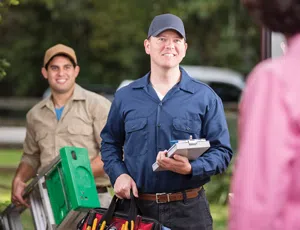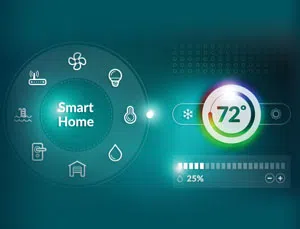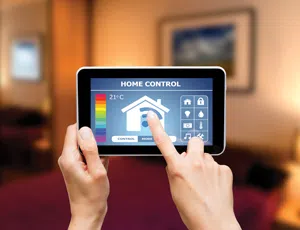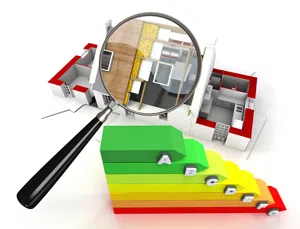Step-by-step guide to take your business to the next level
EDITOR’S NOTE: This article originally appeared in Home Energy Magazine.
The work flow for most contractors is erratic — jobs tend to be seasonal as customers become concerned about winter heating and summer cooling, or they call only when there is a problem needing a quick fix.
You may want to consider moving into the broader area of whole-house performance as a way of getting full-time work year round. With ever-rising energy costs, government-sponsored programs to incentivize home energy upgrades and increased consumer interest in reducing the household’s carbon footprint, it may be time for a transition
Home performance contracting is a building science-based approach to treating a house as a system, using diagnostic tools and making home improvements that draw upon your experiences in HVAC and plumbing.
It’s not an easy transition, but most HVACR contractors can add home performance to their business by getting the appropriate training and mentoring, acquiring certain testing equipment and making the right business development plans to ensure sufficient sales.
As with any new business venture, you need to consider the resources you may already have and those that you can attain over the short and long term.
These steps for transitioning to the home performance contracting market are listed roughly in the order in which they should occur, but this is not necessarily a linear process. Decisions made at each step will affect other steps and you will need to make adjustments along the way.
Step 1: Orientation
Many states, utility companies and municipalities have home energy upgrade programs and may offer contractor orientation and training. Although many American Recovery and Reinvestment Act programs have run out of funding, others continue with local funding by nonprofit organizations. Do some online searching to find out what is available in your area. As you do this initial research, be on the lookout for rebates and other consumer incentives that will be attractive to customers.
Two great places to get started are the Energy Star website and DOE’s Better Buildings website. The Home Performance with Energy Star program is sponsored jointly by DOE and EPA. While this program is not available in all states, the Energy Star web site provides terrific resources that explain the basics of whole-house energy performance and its very useful in educating consumers when making a sales pitch. At Better Buildings, you will find workforce training information and learn about community upgrade programs in selected states.
Step 2: Business Plan
You wouldn’t just start building a house without a plan — it’s the same with a new business. Making a plan forces you to examine your company’s existing capabilities, evaluate the market opportunities and test the feasibility of your business idea and the likelihood of securing funding.
Unless you are particularly astute at business planning, use a business plan template or pro forma financial planning template customized specifically for the construction trades. These templates are available from several online sources. It’s certainly worth the cost of a template to ensure that you have adequate planning and metrics for midcourse corrections that you may need to stay on track.
Step 3: Professional Services Consultation
Of course, your business plan will explore a wide range of financial and legal issues, many of which will require consultation with professional service providers to make sure you don’t get hit with any nasty surprises. This may include legal counsel, accountants, tax advisors, bankers, insurance brokers and others.
Make sure your customer contract language and insurance policies are up to date and that they cover the range of services you intend to provide in your new business model.
Unless you are already well funded, you will need to work with your banker to get financing and loans. Alternatively, you can seek investors, from family and friends to venture capitalists, in what often turns into an ever-widening circle as people turn you down.
Either way, if you’re having trouble raising money, there may be a good reason why — go back and work some more on your business plan.
Step 4: Secure Trade Ally Commitments
If you have an existing contracting business, you may have adequate staff to move into home performance; however, it is likely that you will need subcontractors and trade allies. Your business plan should spell out what staff resources you have now and which ones you will need to acquire.
Once you have identified others you want to work with, execute contracts and agreements and ensure that they are completing any necessary training and certifications. Making these arrangements well before you need their services means you can negotiate pricing and referral fees. You may need to rework the numbers in your financial business plan.
Step 5: Training and Certification
Certification requirements for home performance contracting vary from state to state, but most states mandate special certification as well as specific contracting licenses. Typically, only one staff member must be certified, or you might consider taking on a certified trade ally. Getting a worker trained and certified will run from $500 to $3,500, depending on the worker’s knowledge and skills and on the training selected.
Depending on where you live, there may be certification training in your area. The easiest and quickest way to find out is by using Home Energy’s online training guide. Many utility companies and state and local public agencies offer various basic workshops on building science and energy performance.
Step 6: Equipment
Specialized diagnostic equipment is needed to perform the pre- and post-installation testing necessary to evaluate the success of an energy-efficient retrofit. The most fundamental tool is a blower door, which is framed up in a home’s entryway to create a pressure difference and find air leaks through doors, walls, windows, ceilings, floors, attic and crawl spaces.
It’s difficult to explain to customers what the results of the air pressure test disclose, but there are two tools that can help make your sales presentations more visual. An air current tester, also known as a smoke puffer, produces neutral-buoyancy smoke that you can use to show where there are leaks.
Even more dramatic are infrared cameras that make discovering building defects almost as simple as taking a photo, but one that allows trained professionals to see thermal images that human eyes cannot.
IR cameras can detect air leaks, moisture and other problems behind walls, inside ducts, or in other hard-to-see places. They are relatively expensive — roughly $2,500 to $18,000 — but they are very effective and somewhat addictive once you see what they can reveal.
Step 7: Software
Once your diagnostic equipment gives you the home performance numbers, you can use energy simulation software to predict correctly the energy savings potential of proposed work. With a detailed analysis, you will give prospective clients a clearer view of the energy performance and cost implications of your design options.
There are many manufacturers of energy simulation software. Some of this software is very complex, but some of it is user-friendly, with numerous pull-down menus and wizard options. Basically, you enter the home’s characteristics, performance test measurements, utility bill data and other inputs to create energy simulations.
Step 8: Licenses and Applications
If you do not already hold the required licenses to perform the work you plan to do as a home performance contractor, you will need to obtain those licenses. Don’t forget that your home improvement sales staff might have to be registered as well. Third-party certification is required to be a participating contractor in most local and state training and rebate programs.
Step 9: Trial Launch
While they are not required to do so, many contractors find it useful to complete some practice runs on the diagnostic testing and energy assessment process, including computer modeling, creating improvement packages and generating reports. A good way to do this is to have your employees complete assessments on their own and each other’s homes. This avoids the risk of making big mistakes while a job is in process.
You want your staff to feel at ease with the process when they go out to visit their first customer. A trial launch period will give you a chance to work out the kinks, develop an initial customer base for testimonials and jump-start word-of-mouth marketing.
Step 10: Quality Assurance
You will want to incorporate a system of internal protocols and controls into your standard operating procedures (SOPs), to ensure successful quality assurance (QA). Not only does QA provide your customers with a guarantee of certain standards, but many state, local and utility energy programs require it and many financial partners require it as well.
Guidance for developing and implementing an overall QA system is available on BPI’s Quality Management Systems interactive micro-web site. At-PQC offers an extensive selection of ready-made contractor quality control plans available for a fee.
Step 11: Sales
Home performance contractors face the need to convert a customer from a single product, such as a furnace or air conditioner, to a more inclusive package of upgrades. While having a solid set of basic sales skills will help get you started, it is highly recommended that you have your sales team complete specialized training for home performance.
Be sure to check your local utility. In California, two major utilities offer greatly discounted registration for the Energy Efficiency Funding Group’s six-day Efficiency Sales Professional Certification program. Efficiency Maine offers sales training in conjunction with Dale Carnegie Training and Energy Upgrade California in San Diego County offers sales advice through the California Center for Sustainable Energy.
Two organizations that offer a wide range of online sales training are Efficiency First and the Electric & Gas Industries Association. Both require membership fees for access to their resources, but you can quickly recoup the cost with increased sales. In addition, ACI sponsors sales seminars at national and regional events.
Step 12: Full Launch
Once your field staff have been trained and certified; you have proper licenses, insurance and equipment; your administrative staff are prepared to support your field operations; and you’ve taken the whole team through series of practice runs, you’re ready to roll out your full launch.
You can begin marketing in earnest and working to convert old and new customers to your new service offering. It’s also the time to begin monitoring your progress closely to ensure that your production is on track with your business plan.
Step 13: Continuous Improvement
Continuous improvement is an important key to the long-term success of any company. Use your business plan and your financial projections as benchmarks to gauge your company’s progress toward achieving your goals. If actual results don’t match projected results, it is time to revisit your business plan and make some adjustments.
Some key indicators to watch are lead generation, assessment-to-sale conversions, the number of customers served, profit margins, average sales, total sales, net profits, capacity utilization, customer satisfaction survey results and third-party QA reports.
Some continual improvement adjustments to consider include ramping capacity up or down, ramping marketing investments up or down or changing tactics, adjusting pricing structures, supplemental training and adjustments to SOPs.
How Long Will It Take?
Depending on how well developed your contracting business is and on the extent of your staffing and other resources, the transition into home performance will probably take at least six to nine months. You can always go back and adjust details, but you will want to be fully prepared before making decisions that will have a direct impact on your bottom line.
Chuck Colgan is a writer at the California Center for Sustainable Energy, a San Diego-based independent nonprofit organization that accelerates the adoption of clean and efficient energy solutions via consumer education, market facilitation and policy innovation. Visit homeenergy.org for additional information.





